Name: Matthew Klafter Age: 19 Home Town: Atlanta, GA Area of Study: Exercise Science - Pre-Med Year in School: Junior
I joined the Everest Base Camp Expedition because… truth be told, I had never thought of visiting the Himalayas before I found out about this opportunity. To me, it was something that you do to check off your bucket list before the end of your time here. At first, I almost passed up on the opportunity because I thought that I would just go home after the semester was over and enjoy minimal responsibilities as a college kid home for the summer. After a couple weeks passed, I started to realize what a terrible mistake I was about to make. I would be extremely lucky to be able to do to visit such a place at such a young age. On top of being given the chance to visit such a breathtaking place at 19, being able to participate and learn about research the relates to my field of study is something that I can gain from greatly. So, I decided to apply for the program and hope that I would be lucky enough to be admitted. Within a week of applying, I received an email telling me that I had been accepted and that I should start to take the necessary steps to confirm my admission. At first, I was shocked, and I couldn’t believe that I actually made it into such a competitive program and was almost guaranteed a trip to the Himalayas. The shock and disbelief was soon followed with extreme excitement and anticipation. I am forever grateful for this opportunity, but I am very thankful for Dr. Tom Brutsaert, Dr. Trevor Day, and Nima Sherpa for making it possible for all of us. If even one of them was not included in this expedition, none of this would have been possible. I can confidently say at this point in the trip that I have gained a lot from these experiences; not only knowledge of altitude physiology, but I have a new-found respect for culture, nature, and people that continue to work hard everyday even through the toughest adversities.
I’m involved with the SU research studies by… Like most, I part take in Mount Royal University’s acclimatization study. We take daily measurements that include end tidal CO2, respiratory rate, ventilation, O2 Saturation, resting heart rate, blood pressure, and AMS scores. Also like many of us, we do frequent cognitive testing to see how our brains respond to changes altitude. This study is an SU lead study. I participate in the brain-blood flow study as well which measures how altitude effects the blood supply to the brain and how that may impact cognitive performance. One other study I volunteered for is the breath hold study that is conducted by Pontus, our Swedish companion. In Katmandu, Pontus has me perform a minute apnea, or breath hold, and then two maximal apneas (one with hyperventilation prior to breath hold). After recording the duration of the apneas, he did an ultrasound on the spleen to see how it reacted to the apnea. I record my AMS scores for him every morning and night and also give heart rate and oxygen saturation numbers during those times. His research compares the effects of hypoxia induced by apnea to hypoxia induced by altitude.
My favorite part of the trip so far has been… Other than the breath-taking views that we have seen along of treks, our lead guide Nima Sherpa gave me a Sherpa name: Mingma Sherpa. i received this name from him because he appreciated my helpfulness and respectfulness for Sherpa and the Khumbu Valley. I am only one of a few people on the trip to receive this honor and, in my opinion, it is something to feel proud of.
The worst part of the trip so far… I got a head cold in Namche making the trek from Namche to Debuche relatively difficult, but the worst part of the trip thus far has been having to continue to spend time away from my family and girlfriend. It is one thing being away from them at Syracuse, but being on the other side of the world with limited communication is rather difficult. If you guys are reading this, I miss you a lot and I am excited to see you all soon. Sending lots of Love from the Himalayas.
A few things I’ve thought were interesting… I have found Sherpa culture very interesting. Nima has taught me a lot about Sherpa traditions and language. This includes, but is not limited to, how marriage and afterlife work in Sherpa culture and some basic Sherpa words, which are difficult to learn because Sherpa is not a written language. The way that the Sherpa people have developed the ability to carry extremely heavy loads over long distances at such an extreme altitude is something I have found fascinating. It shows how effective and beneficial developmental and evolutionary adaptions can be.
One thing most people don’t know about me… is that I have an interest in Neonatology. I think it would be amazing to help newborns that come into this world with disabilities or diseases. Being able to give a life a fighting chance is something I would love to do. This interest may have come from the fact that my little brother was born with a disability and he had to spend almost a month in the NICU and we are very lucky that my parents were eventually able to bring him home for me to meet him. I would love to give that gift to other families.
Daily Recap
Today, we left Pheriche and started our trek to Lobuche. I was in a room with Ross, Jackson, and Jansen and we woke up at 6:30am so we could have our bags packed and outside by 7am. Professor Brutsaert warned us that this part of the trek can get cold, so most of us were fitted with our heavy jackets, beanies, leggings, and gloves. We had our usual toast and hard boiled eggs for breakfast and departed Pheriche around 8am. From Nima’s family’s lodge, we started to head north of the valley towards the hills.
The first hill we were suppose to climb appeared much closer then it really was. The valley that Pheriche sits in is vast and is a wide open plain making it difficult to judge the distance of the mountains and hills around us. It took there group nearly an hour to exit the valley and begin the accent towards Lobuche. At the base of the first hill, our group split into somewhat separate parties. One of these parties was lead by Chad Althiser. Knowing that this trek was one of our largest gains in elevation, Chad decided that an exaggerated slow pace would be the best strategy to avoid more severe acute mountain sickness symptoms. Others in the group quickly recognized what a good idea this was and formed a line behind Chad to let him set the pace. Quickly this was known as the Chad Train, but after taking the pace into account, Jacob Deblois renamed it to the Chad-erpillar, which we all agreed was a more fitting title.
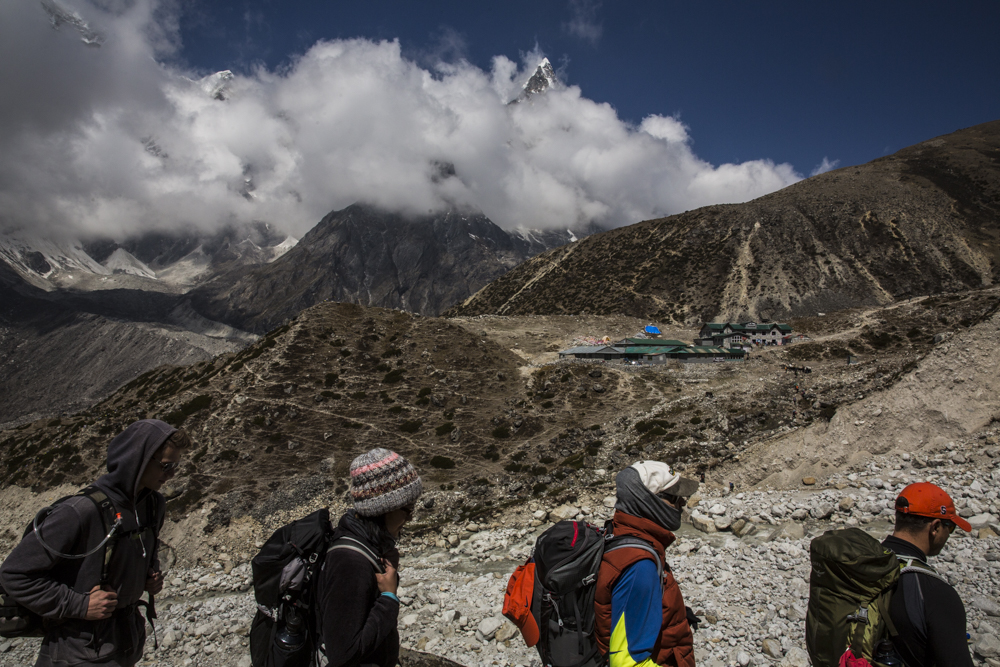
The weather we had was amazing as we made this accent; the sun was shining and the clouds were to a minimum which allowed us to see some amazing views on several mountains. As we approach the top of the first incline we came to a river that was flowing rapidly down towards the valley where Pheriche sits. What was cool about the river is that the color of all the rocks and dirt went from orange and brown to white and grey, as if the water had washed the colors away. We approached the river as a more unified group and crossed it together using a wood bridge that was made of plywood and rocks. Although it was not a long distance to cross, the couple meters across was anxiety inducing when the integrity of the bridge was put into question.
The group rested for a few minutes at a bakery on the other side of the river before starting one of the more difficult phases of today’s trek. This consisted of one very steep hill, where we gained most of our elevation. While some pushed up the hill with confidence and decent pace, more people joined the Chad-erpillar to avoid overexertion on such a steep incline. Eventually, the whole group made it up the hill. Many started to experience mild headaches, which would persist through the rest of the trek. At the top of the hill, we were able to see the memorial for Scott Fischer, one of the climbers that died in the 1996 climbing accident that we have been reading about in Jon Krakauer’s “Into Thin Air”. In addition to his memorial, there was dozens of other memorials for people that had died on Everest or in the Kumbu Valley. These memorials were made or rock sculptures and covered in prayer flags.
After we were done paying our respects to those that have passed, we continued our trek towards Lobuche. The last leg of this trek was much easier because it was a relatively flat. We only had to walk through a small valley of rocks to reach Lobuche. On this part of the trek, we were given the most amazing view of Pumori, one of the higher mountains in the Himalayan mountain range. Once we arrived in Lobuche, we quickly felt the effects that the 700m altitude change placed on us. Most of us felt fatigued with a mild headache that most described as “not really being there” and “somewhat out-of-body” feeling. Some people’s symptoms were much worse than other’s symptoms. Some began to experience loss of appetite and nausea upon lunch, and one of our members began to vomit. She was placed on the medicine Diamox immediately to try to avoid worsening of symptoms. Many felt better after food and some sleep.
Before dinner approached, Andrew, Cassie, Brittany, Leah, and I walked up onto a high ridge close to Lobuche to try to get a good view of the sunset. As we started our walk, however, clouds and fog quickly rolled in. At first we were discouraged and thought it would ruin our views, but we kept going hoping it would pass as quickly as it came. Once we reached the top of the ridge, the fog made it hard to see anything in any direction, but instead of being disappointed, we welcomed the eeriness of being literally in the clouds. Suddenly, a breath taking view appeared before us: the clouds lowered to a point that we could see over them and we could see most of the mountains around us and could see a full moon over one of the peaks. Looking over the clouds was very cool and it made the short hike worth it. Once we lost that view, we went down for dinner. After our delicious pizza dinner, we all went to bed. Unfortunately, many of us were greeted with frequently interrupted sleep. I personally woke up every hour with a dry mouth, cold body, and shortness of breath. Even with the inconvenient AMS symptoms, the day was still an amazing one for most.
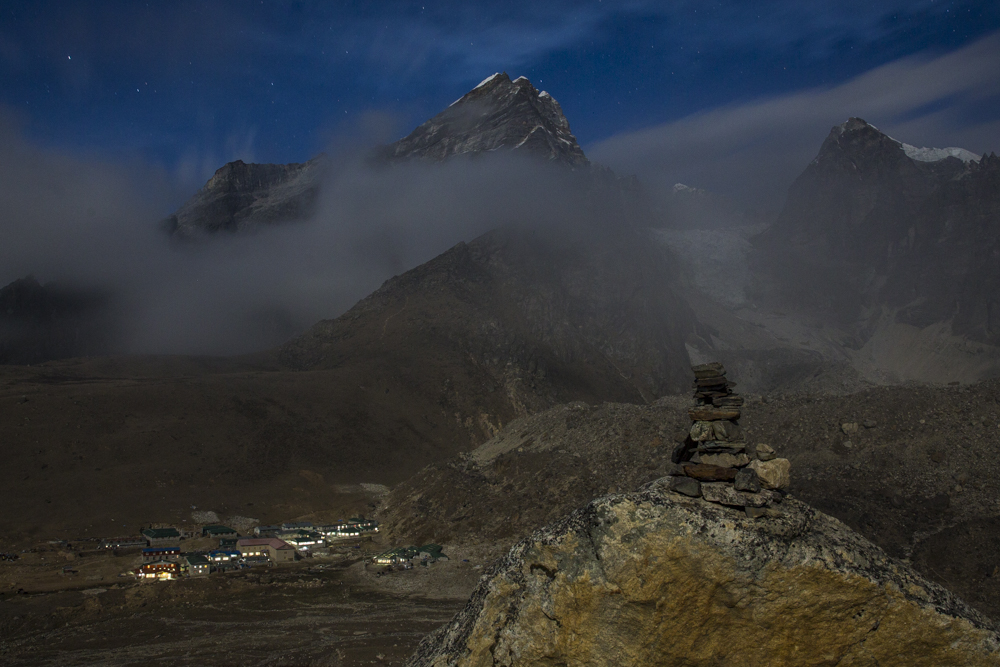
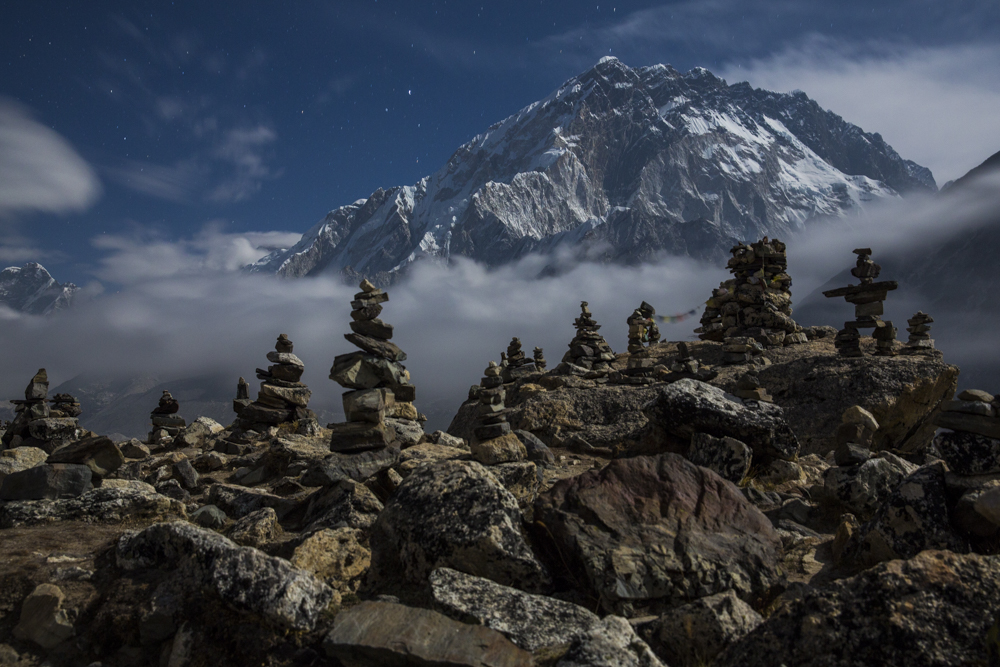
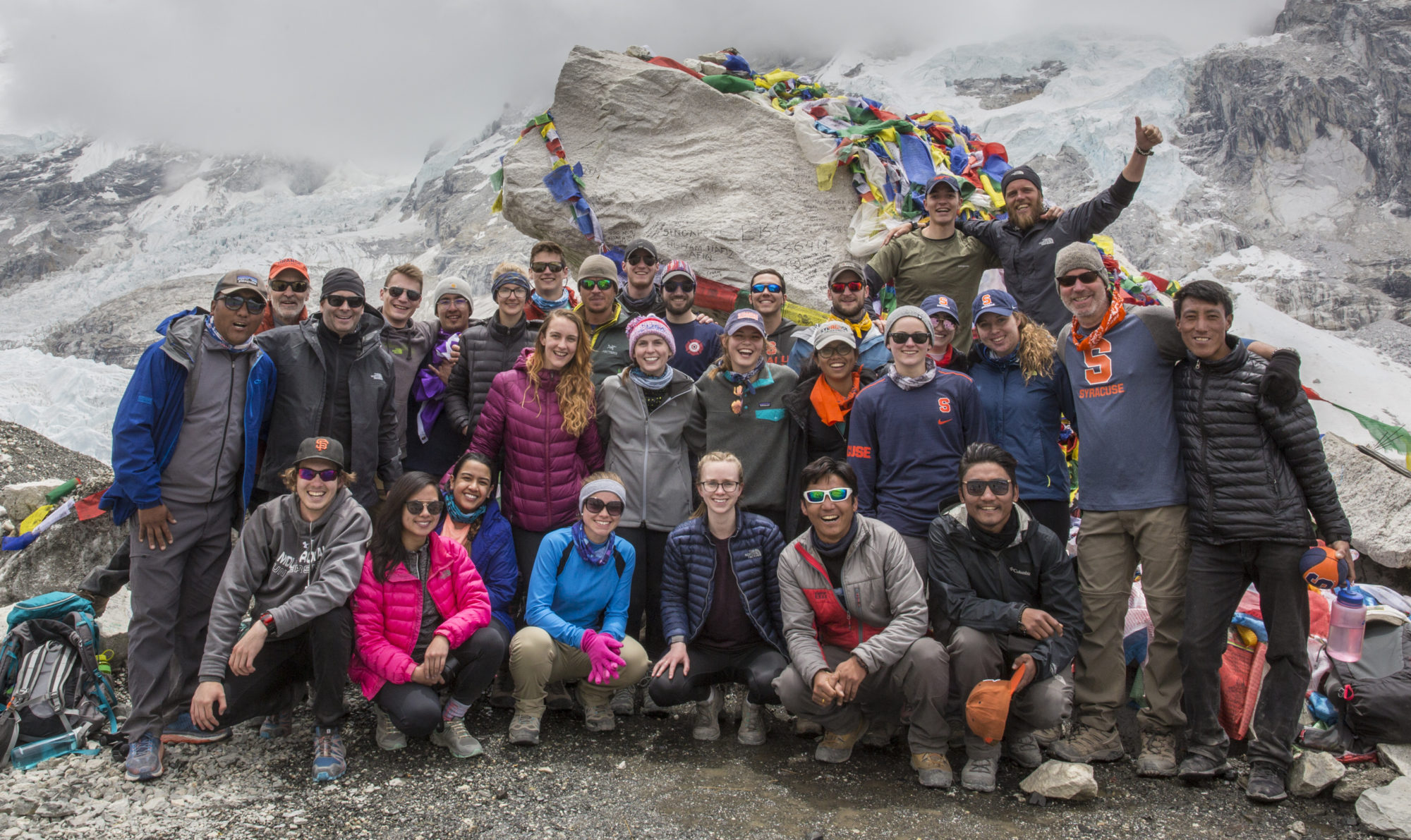

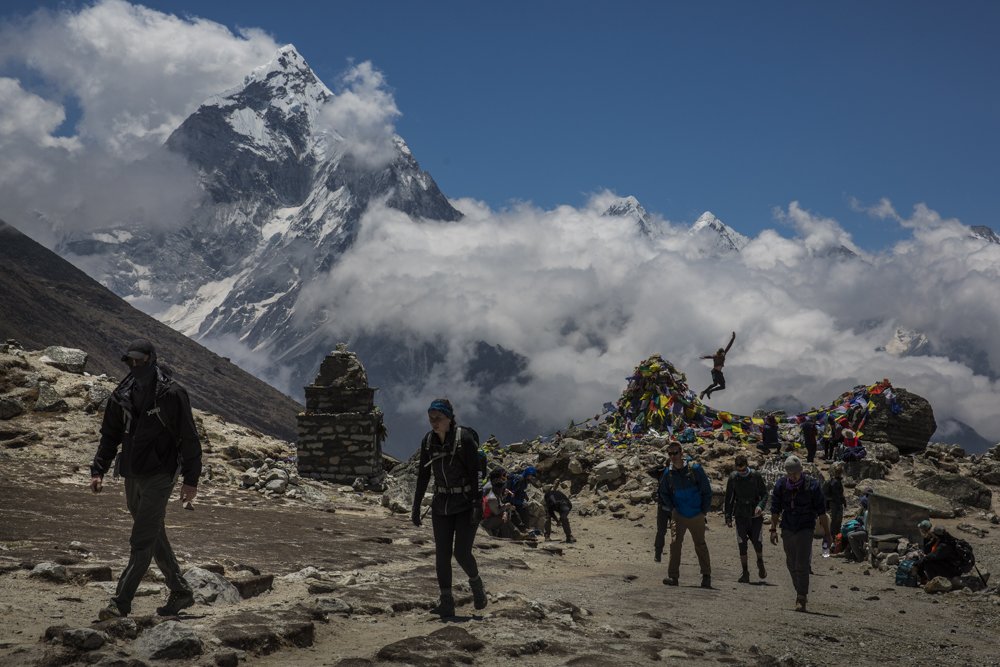
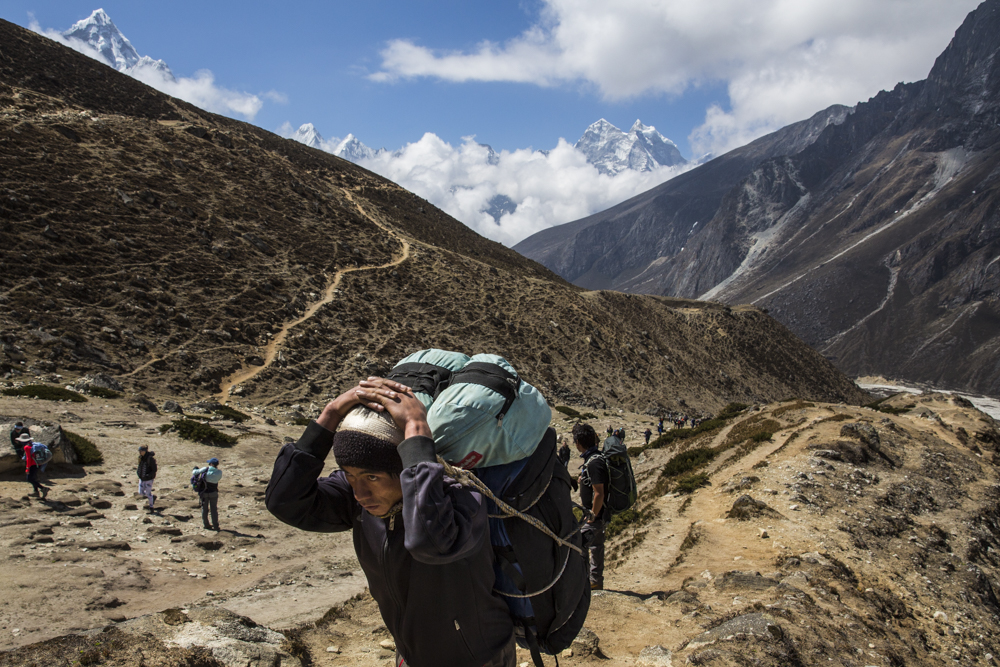
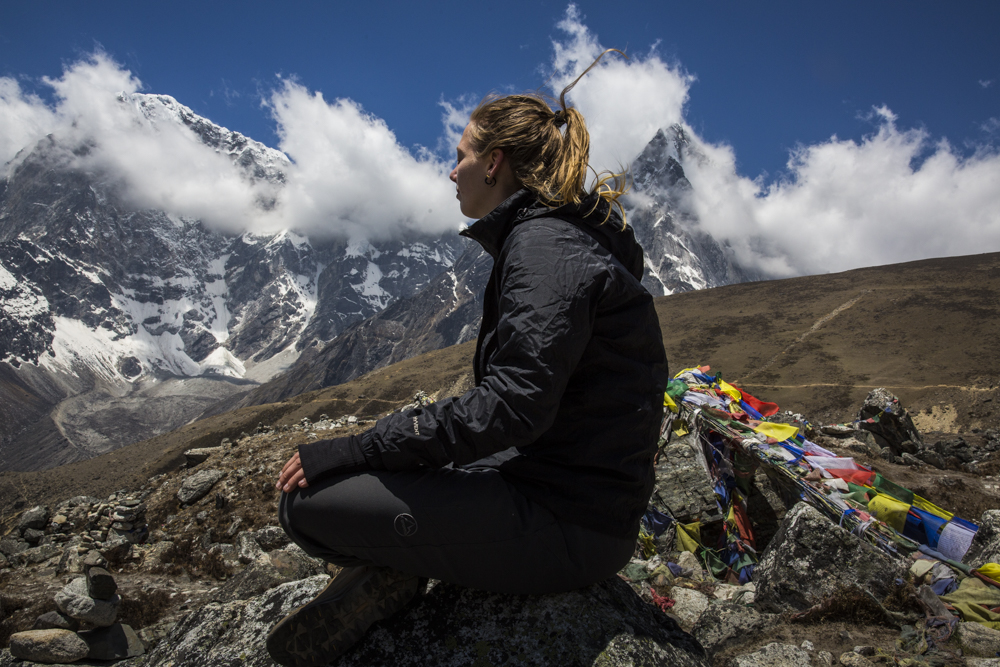
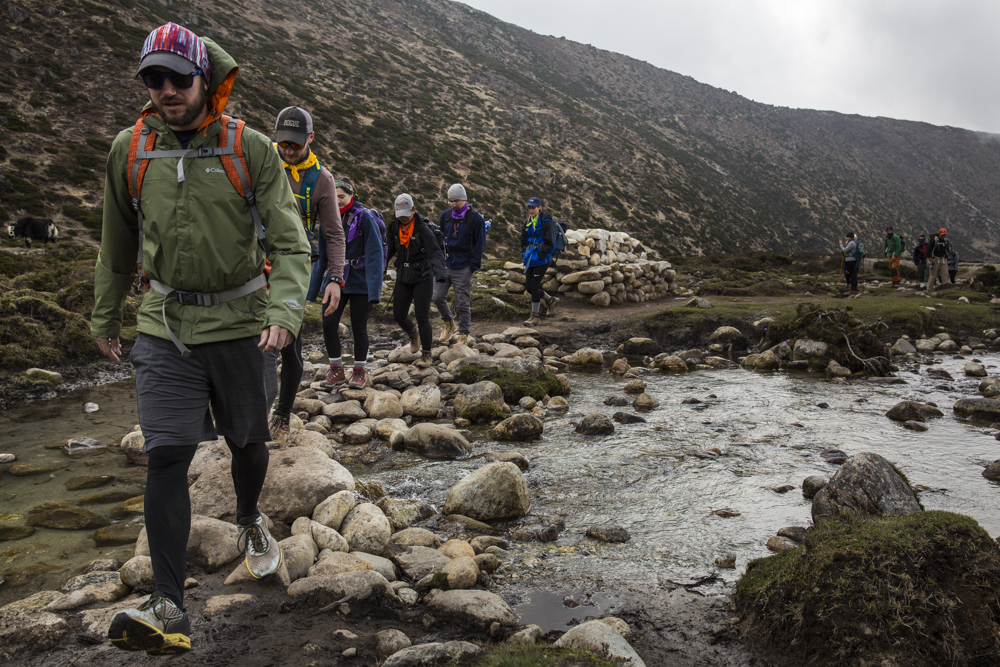
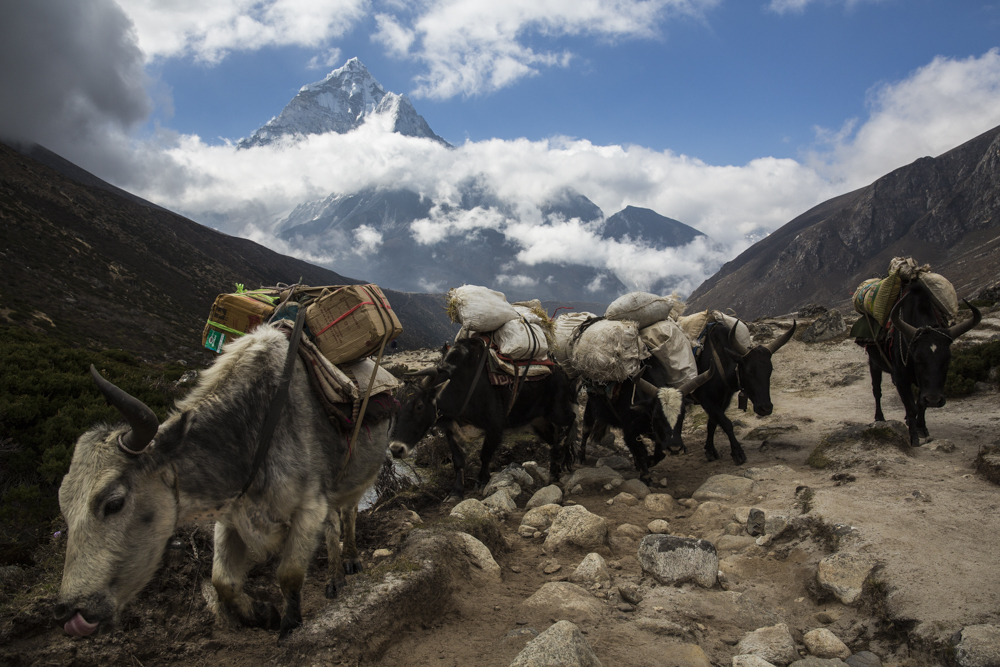
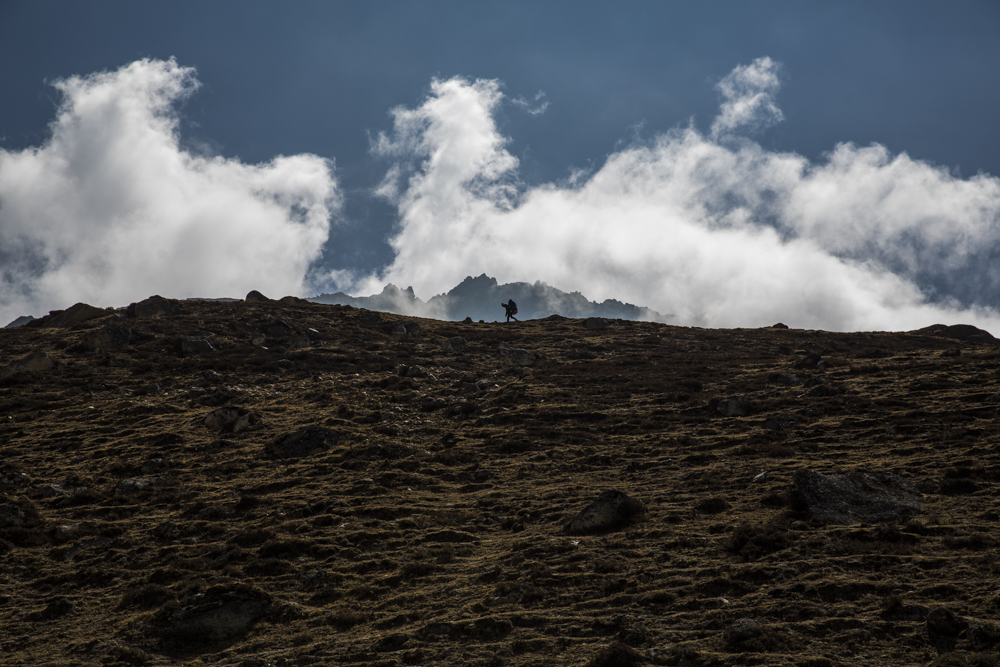
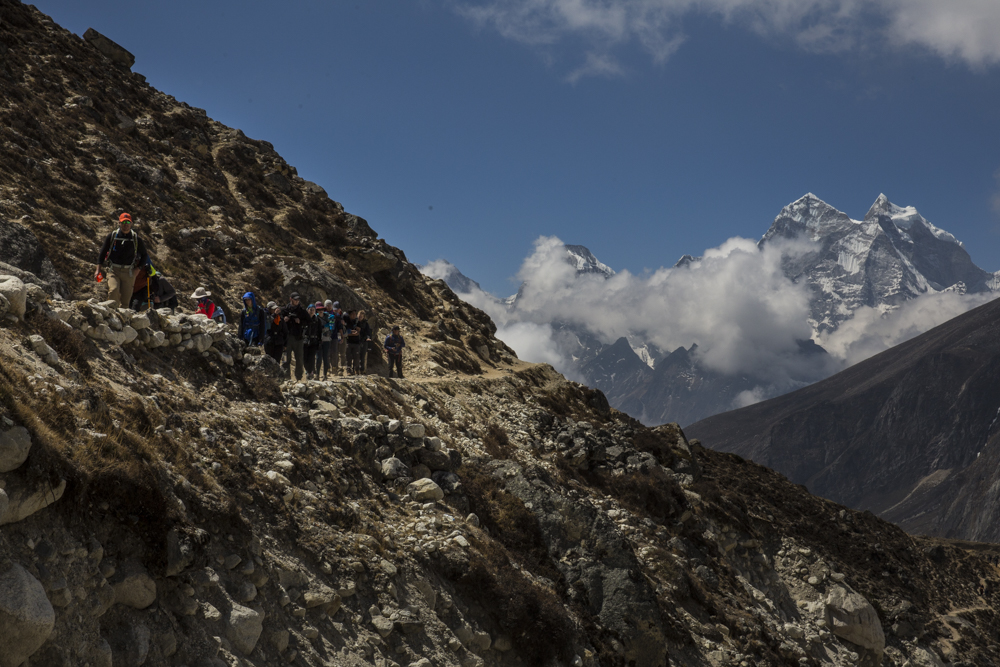
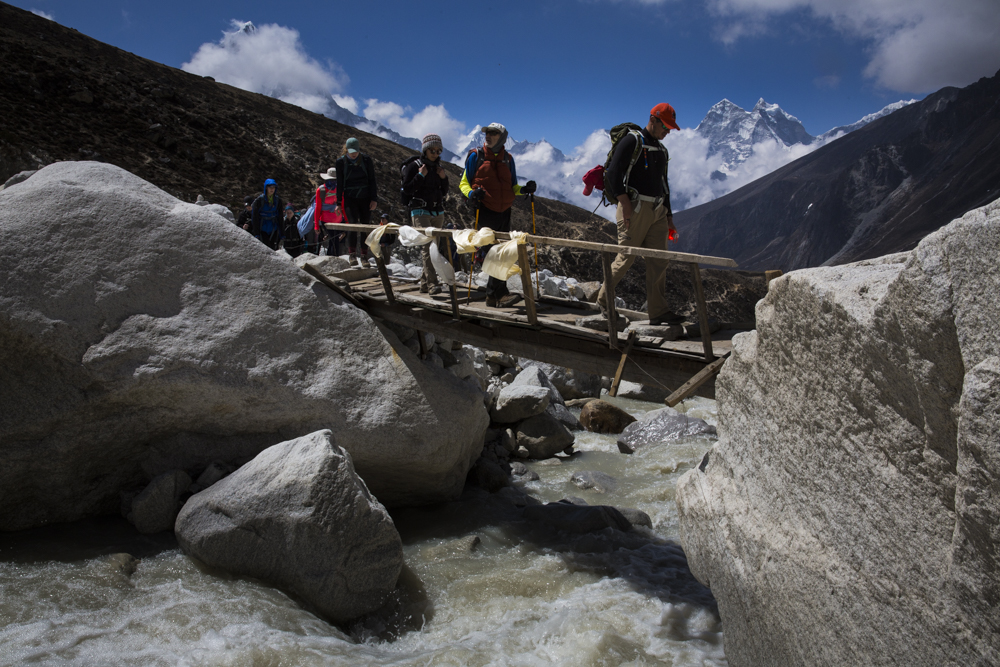
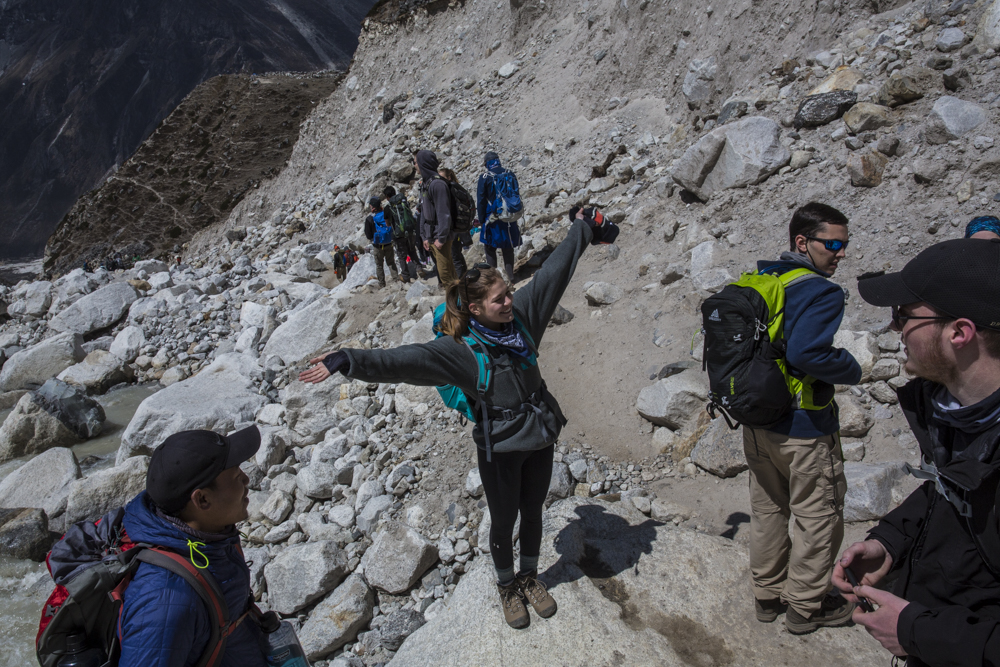
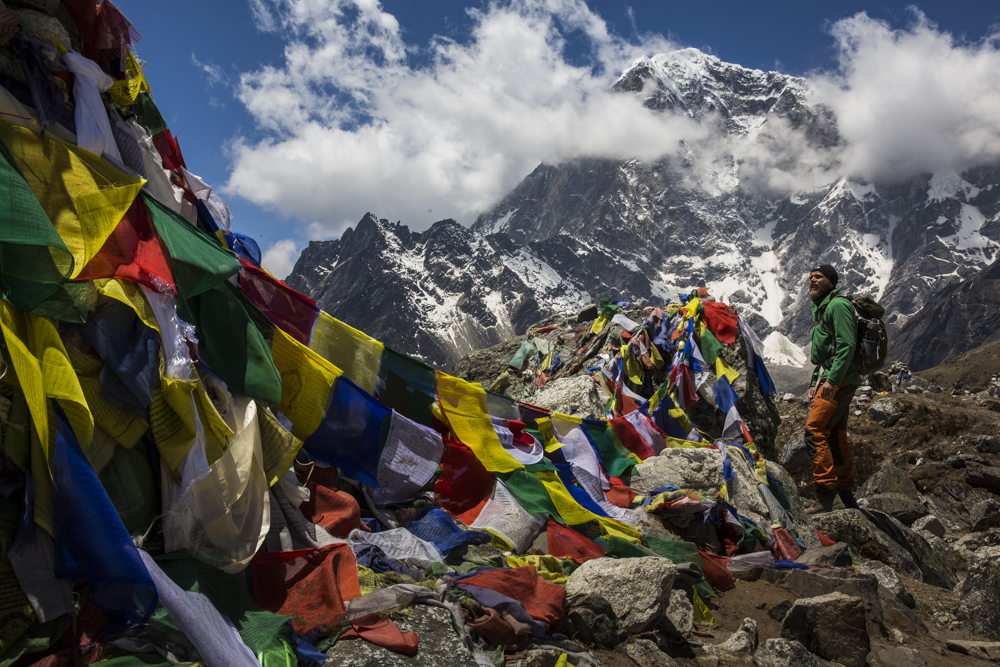
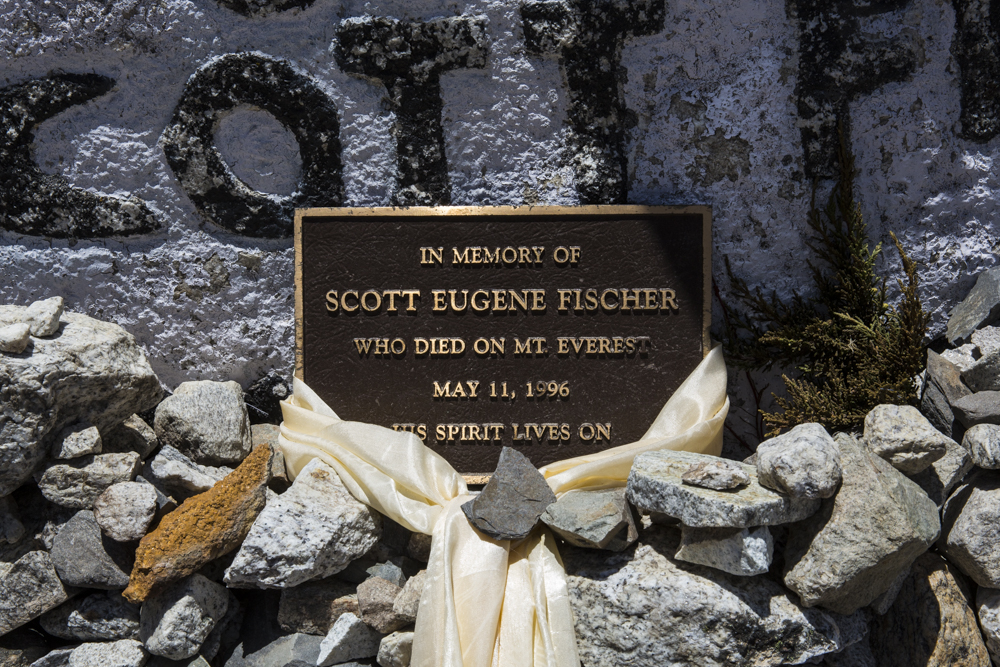
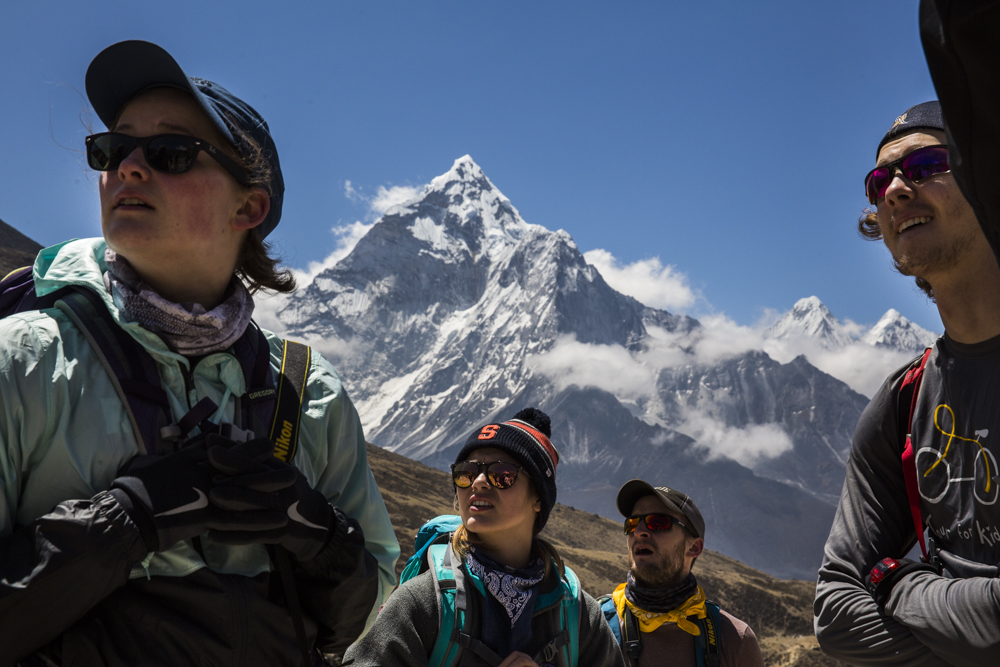
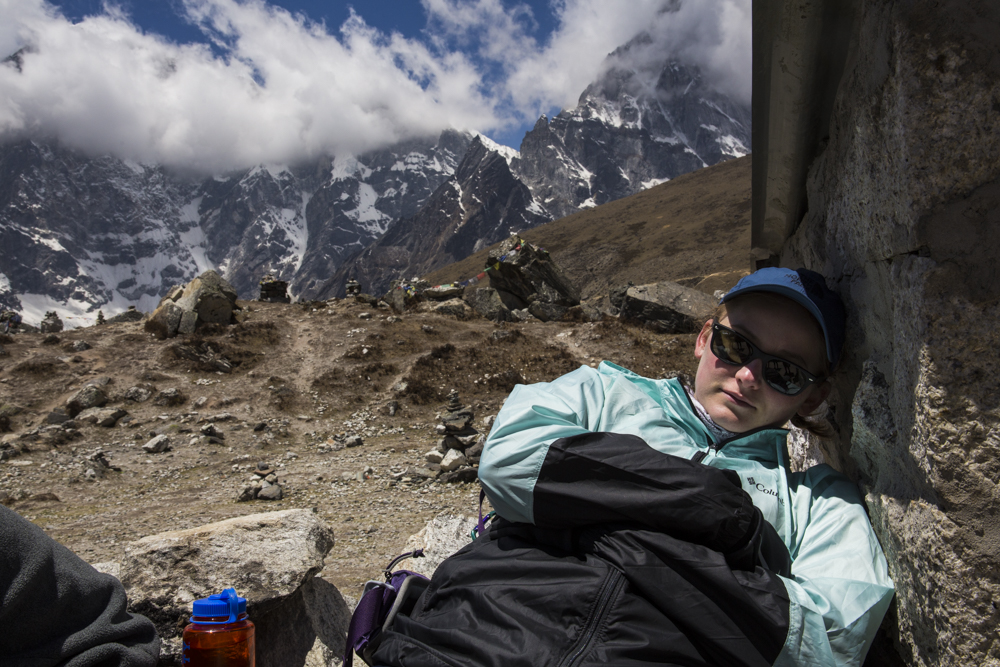
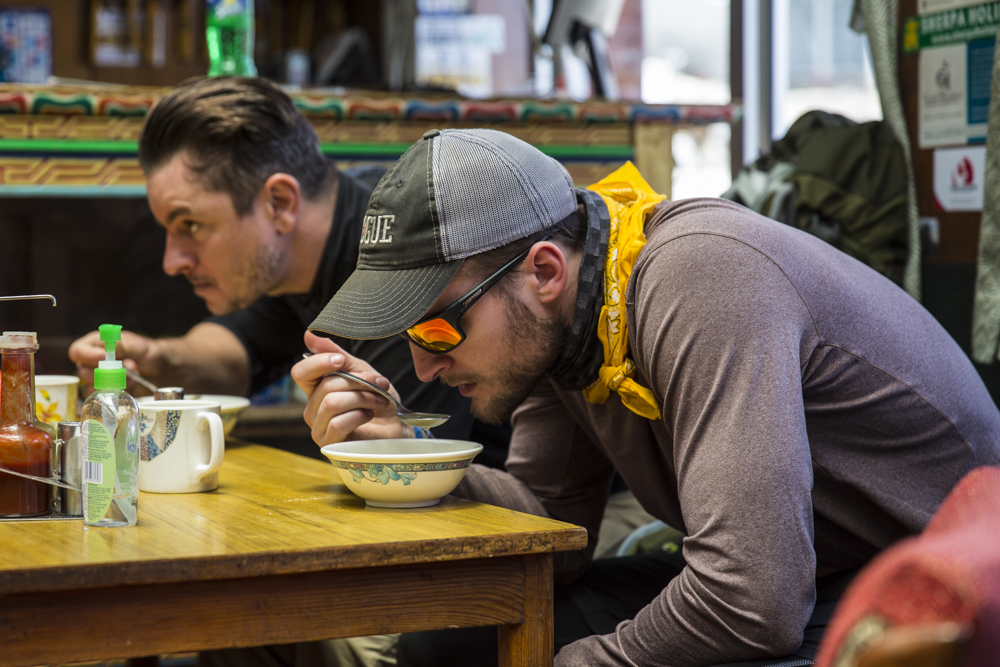
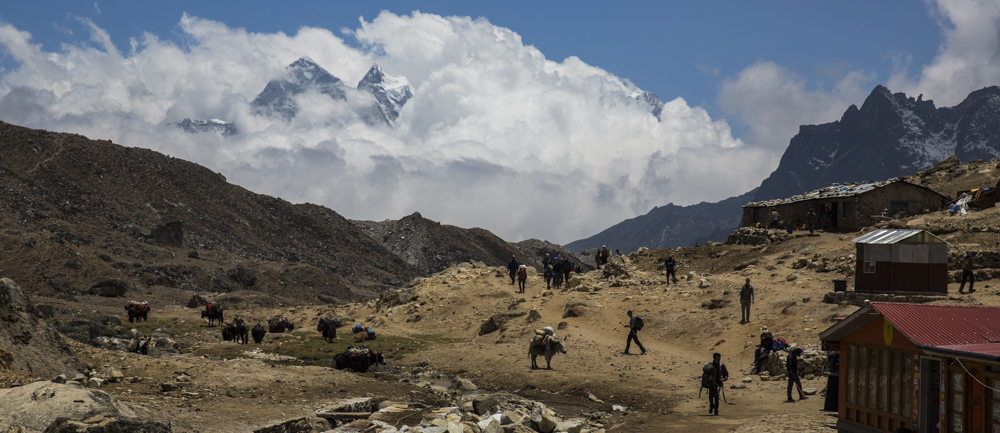
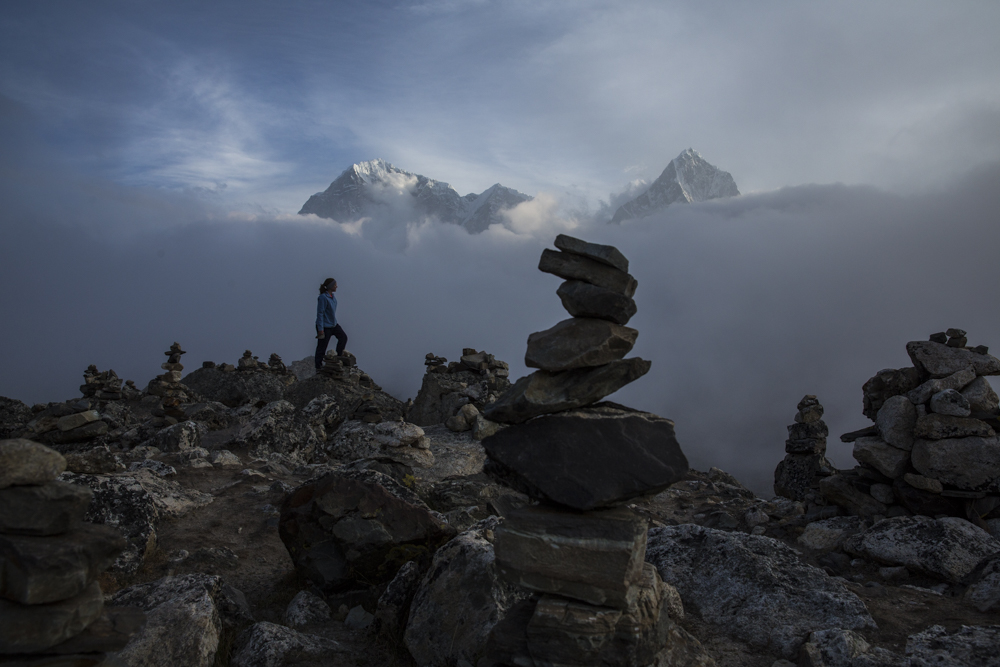
Congratulations Matt to you and all your team on a fantastic journey. The relationships and experiences will last a lifetime. Anxious for your return to hear you tell us first hand your reaction to all this ! ?
Thanks to SU, the Sherpa ‘s for making this voyage possible!